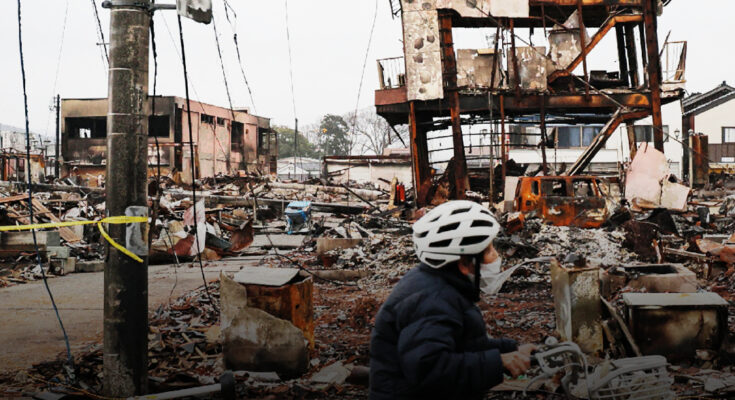
A magnitude 6.6 earthquake struck off the coast of Miyazaki Prefecture in southern Japan on Monday evening, triggering a brief tsunami advisory that was later lifted. The news quickly spread on social media, sparking concern and discussion among netizens.
According to NHK World Japan, the quake occurred at 9:19 p.m. in the Hyuganada Sea, with its epicenter at a depth of 36 kilometers. The hardest-hit areas recorded a seismic intensity of lower 5 on Japan’s scale of 0 to 7.
The Japan Meteorological Agency (JMA) initially estimated the quake’s magnitude at 6.9. It was later revised to 6.7 before being finalized at 6.6. The advisory was lifted by 11:50 p.m. on Monday.
NHK World Japan also reported that 20-centimeter tsunami waves were observed in Miyazaki and 10-centimeter waves in Kochi, but no significant damage was reported.
However, in Miyazaki City, the earthquake caused minor damage, shattering a large window pane at a railway station and knocking bottles off shelves at a liquor store.
As a precaution, some train services in Miyazaki Prefecture were suspended, and the Kyushu Shinkansen bullet train operated at reduced speed between Kumamoto and Shin-Yatsushiro.
Meanwhile, the Sendai nuclear power plant in Kagoshima Prefecture reported no abnormalities, with radiation levels in the area remaining unchanged.
Assistant Professor Yamashita Yusuke of Kyoto University’s Disaster Prevention Research Institute explained that the quake likely occurred near the boundary of tectonic plates. He noted that the tremor happened at the edge of the area where a magnitude 7.1 earthquake struck in the Hyuganada Sea in August of last year.
Yamashita suggested that movement in a previously cracked area may have caused the recent quake. However, he emphasized that it is unlikely to have any significant impact on the potential for a Nankai Trough mega-quake.
He cautioned, though, that similar tremors could occur in the future due to the magnitude of the recent quake being close to 7.
The earthquake in southern Japan generated significant reactions online. One user wrote, “Omg.” Another shared, “Prayers for Japan. I don’t care how often, I’m sure it’s nerve wrecking [sic].” A third commented, “Prayers for Japan and the whole world.”
Some were tense and anxious. “On edge. We almost had a tsunami warning,” one revealed. Another expressed both worry and optimism, “That’s concerning. I hope everyone stays safe and the situation is quickly under control.”
Netizens expressed concern over the earthquake, noting that even Japan’s advanced earthquake-resistant infrastructure might struggle against such significant tremors.
A netizen’s comment on the recent 6.9 magnitude earthquake in Japan, posted on January 13, 2025 | Source: Facebook.com/Channel4News
Another recalled the devastation caused by past earthquakes, describing them as unforgettable and deeply traumatic.
Others empathized with the challenges of living in a seismically active country like Japan, while many offered prayers and well wishes for those affected.
Although the advisory has been lifted, Japanese authorities remain vigilant and urge residents, particularly those working at sea, to exercise caution. The recent earthquake in southern Japan follows a series of significant quakes that have impacted the country in recent years.
In January 2024, a devastating 7.5 magnitude earthquake struck Japan’s west coast, leaving at least 30 people dead, according to Ishikawa Prefecture authorities.
The quake, which hit the Noto Peninsula, caused widespread destruction, collapsing buildings, sparking fires, and triggering tsunami alerts as far away as eastern Russia.
Rescue efforts were hindered by a destroyed road that cut off access to parts of the peninsula, and rescuers worked tirelessly to reach those trapped under rubble. Although tsunami advisories were lifted the following day, the disaster left a lasting impact on the region.
Even more devastating was the 2011 Tohoku Earthquake and Tsunami, often referred to as the Great East Japan Earthquake. According to the National Centers for Environmental Information of the National Oceanic and Atmospheric Administration, this event resulted in over 18,000 deaths.
It remains the largest earthquake ever recorded in Japan and reportedly the third-largest worldwide since 1900.



